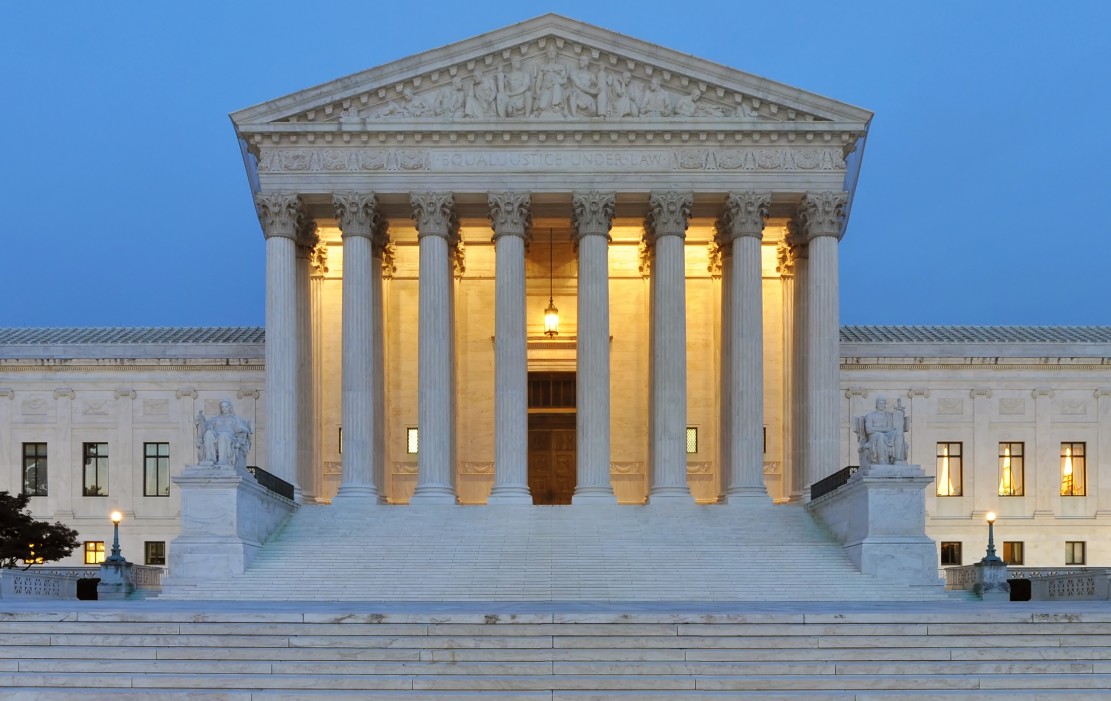US Supreme Court struggles with when police may enter home for safety checks or suicide threats

By LE Desk
Washington, March 25: The US Supreme Court on Wednesday struggled with the issue of when police can enter a home without a warrant when the intent is not to conduct a criminal investigation but to check on the occupant’s health or safety.
Some justices worried about erecting obstacles for officers who need to respond quickly to reports of worry about an elderly person’s well-being or alarmed calls that the person inside has threatened to die by suicide, The Washington Post reported.
Others were concerned that exceptions for non-investigatory intrusions for “community care taking” might breach the Constitution’s prohibition of unreasonable searches and seizures, and the traditional view that a person’s home is off-limits without a judge’s authorization to enter.
Justice Brett M. Kavanaugh seemed particularly concerned about hampering police who have been warned someone is contemplating suicide.
“Do you know how many suicides by gunshot there are every day in the United States?” Kavanaugh asked Washington attorney Shay Dvoretzky, who was representing a Rhode Island man who had been taken in for examination after a domestic dispute.
Kavanaugh answered his own question: “There are 65 suicides by gunshot in the United States on average every day, okay? And police officers are critical in, when a neighbor, when a family member, as in this instance, can help prevent that.”
In the case at hand, Edward Caniglia is suing the city of Cranston, R.I., for taking him to a hospital for a mental health evaluation after an argument with his wife in 2015, and for seizing his guns and ammunition.
During the argument — which was over a coffee mug — Caniglia threw an unloaded handgun on the table and told his wife, “Why don’t you just shoot me and get me out of my misery?” court documents say. She spent the night in a motel but called police after not being able to reach her husband and said she was worried he had killed himself.
Caniglia told police he was fine, that he was not suicidal and that his mental health was none of their business. Still, he was taken in for examination. His seized weapons were not returned until he filed a lawsuit against the city.
But his case (minus a finding that the gun seizure was improper) was dismissed by a federal judge. The decision about the community caretaking exception was upheld by a unanimous panel of the U.S. Court of Appeals for the 1st Circuit — which included former Supreme Court justice David H. Souter, who often hears cases in the Boston-based court.
Dvoretzky acknowledged that the Supreme Court has found a caretaking exception related to automobiles already in the government’s possession but said allowing entry into a home without a warrant went too far.
“The Fourth Amendment recognizes the sanctity of the home by drawing a firm line at the door,” Dvoretzky said in his opening remarks. “The government cannot cross that line without a warrant, unless there is consent or exigent circumstances.”
But Dvoretzky’s request for such a rule drew a blizzard of hypothetical challenges, with Chief Justice John G. Roberts Jr. leading the way. Roberts asked about whether police could enter a home after receiving a call about an elderly person who failed to show up for dinner at a neighbor’s house. She doesn’t respond to phone calls, and police find her back door open. Can they go in?
Not without more than that, Dvoretzky replied. What about 24 hours later, and she hasn’t been seen, Roberts asked. Still no, the lawyer answered.
Justice Clarence Thomas wanted to know where a wellness check was prohibited in the Constitution. Kavanaugh said he found Dvoretzky’s response to Roberts “somewhat startling.”
The Justice Department was supporting the city in saying police had the right to make such checks. Its lawyer Morgan L. Ratner said the case was different from the court’s other Fourth Amendment inquires.
“The question is not act now or get a warrant first. It’s act now or not at all,” she said. “That’s because there is no warrant process in a lot of these non-investigatory situations, from welfare checks on elderly residents to intervention in current suicide threats.”
Ratner added that the key principle “is if someone is at risk of serious harm, and it’s reasonable for officials to intervene now, that is enough.”
Roberts asked how far that extended: to a cat in a tree in a yard with a fence and locked gate? To the threat of water damage to a van Gogh painting in the house of someone who can’t be reached?
Ratner said averting serious harm to people “is the paramount government interest.”
Justice Amy Coney Barrett pressed Marc DeSisto, a lawyer for the city, about the latitude that should be afforded police with a striking hypothetical: Could they break up a gathering of people not wearing masks in a city where coronavirus cases were spiking but mask-wearing was not mandated, she asked.
It was hard not to recall the criticism President Donald Trump received for a Rose Garden event nominating Barrett in which a number of attendees later were diagnosed with the virus.
DeSisto answered yes. “If they go in and just disperse the crowd, I think that fits within the community caretaking,” he said.
The case is Caniglia v. Strom.
Sign up for our weekly newsletter to stay up to date on our product, events featured blog, special offer and all of the exciting things that take place here at Legitquest.




Add a Comment